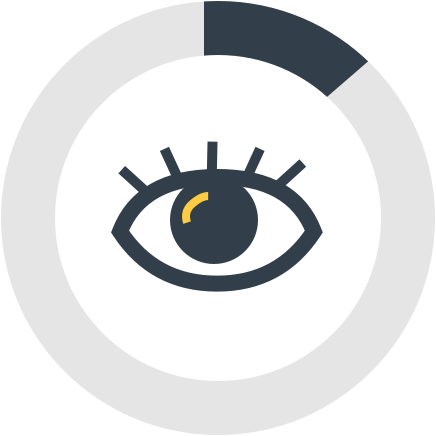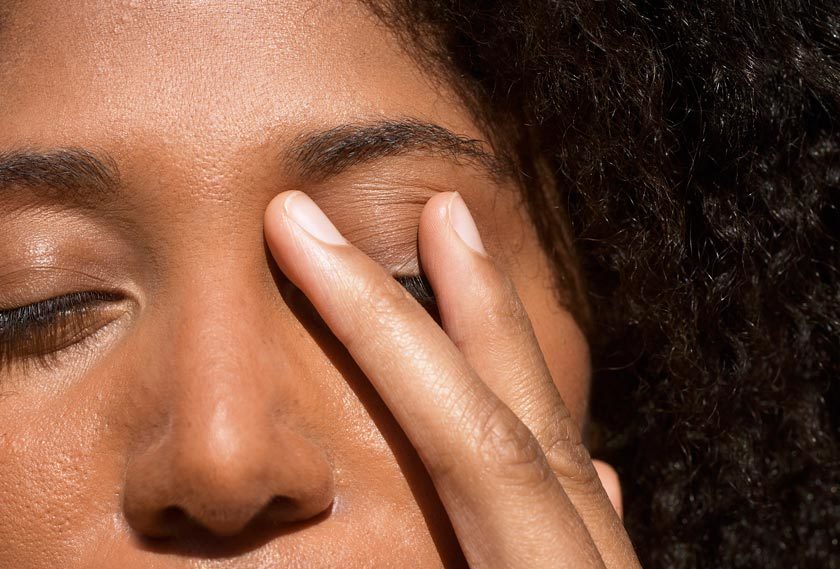The Sun & Your Eyes
Safeguard Against Vision Damage
No matter your age, the time of year or location, focus on safety by protecting your eyes from the sun every time you go outside.
In much the same way that it damages your skin, UV radiation (both UVA and UVB) from the sun and tanning beds reaches you by invisible wavelengths, producing DNA changes that can lead to skin cancers on the eyelids and premature aging of the delicate skin around your eyes.
The importance of eye protection
If left untreated, eyelid skin cancers can become dangerous and disfiguring
At least 10% of cataract cases are attributable to UV exposure

How the sun harms your eyes
UV radiation can cause other serious eye conditions including:
Cataracts: The most common cause of treatable blindness, cataracts cloud and yellow the lens of your eye, causing progressive vision loss.
Macular degeneration: A major cause of vision loss for people over age 60, macular degeneration is caused by cumulative UV damage to the central portion of the retina, the back layer inside each eye that records what we see and sends it to your brain.
Keratitis, or corneal sunburn: UV exposure can cause painful burning of the cornea, the clear surface that admits light and images to the retina. Also known as “snowblindness,” this condition occurs in skiers and hikers because of the sun’s intensity at altitudes and its reflective nature off of water, snow and ice.
Conjunctival cancers: Once rare, these eye cancers are increasing, especially among older people.
About Ocular Melanoma
While rare, ocular melanoma (also known as uveal melanoma)
is the most common eye cancer in adults.
Unlike melanomas that occur on the skin, ocular
melanomas have no known association with UV rays.
How the sun harms your eyelids
If you are like most people, you’ve probably never thought about eyelid skin cancer, and it might surprise you to learn that basal cell carcinoma (BCC), squamous cell carcinoma (SCC) and melanoma on the eyelid can occur.
To break it down further: BCCs make up the vast majority — about 90 percent — of eyelid skin cancers. Of the balance, an estimated 5 percent or more are SCCs, while melanomas account for 1 to 2 percent. Most eyelid skin cancers occur on the lower lid, because it receives the most sun exposure.
When diagnosed and treated early, eyelid cancers usually respond well to surgery and follow-up care, with the eye and eyelid functioning intact. But left untreated, they can be dangerous and disfiguring – with the potential to cause tissue damage and blindness. Both BCCs and SCCs can also spread to the eye itself and surrounding areas.
Protect your eyes against the sun
And look cool doing it!
By embracing some simple actions and making them a way of life, you and your family can safely enjoy the great outdoors while protecting the health of your eyes and the sensitive skin around them.
- Wear sunglasses year-round whenever you are out in the sun. Sun damage to the eyes can occur any time of year.
- Choose shades that block 99 to 100 percent of both UVA and UVB light. When purchasing sunglasses, look for the Skin Cancer Foundation’s Seal of Recommendation.
- Wear a hat with at least a three-inch brim and tightly woven fabric (no holes) to protect your face and the top of your head. Hats can block as much as half of all UV rays from your eyes and eyelids.
- Use a broad-spectrum sunscreen with an SPF of 30 or higher, to protect yourself when you need to take off your shades. Choose one that is safe for your face and eyes.
- Be aware of clouds: the sun’s rays can pass through haze and clouds, so eye protection is important even when there is cloud cover.
- Take extra care near water, snow and sand: 80 percent or more of the sun’s rays reflect off of these surfaces, so that they hit your eyes and skin a second time.
- Be altitude-aware: UV intensity increases with altitude, so be sure to protect your eyes while skiing, snowboarding and hiking.
- Seek shade: Whenever possible, especially during times when the sun is most intense (typically 10 AM – 4 PM).
If you are experiencing problems with your eyes or eyelids, visit your physician or eye doctor.
Get proactive about prevention
Safeguard your eyes by making sun safety a daily routine, year-round. For more prevention tips, see Your Daily Sun Protection Guide.
Reviewed by:
Elisabeth G. Richard, MD



